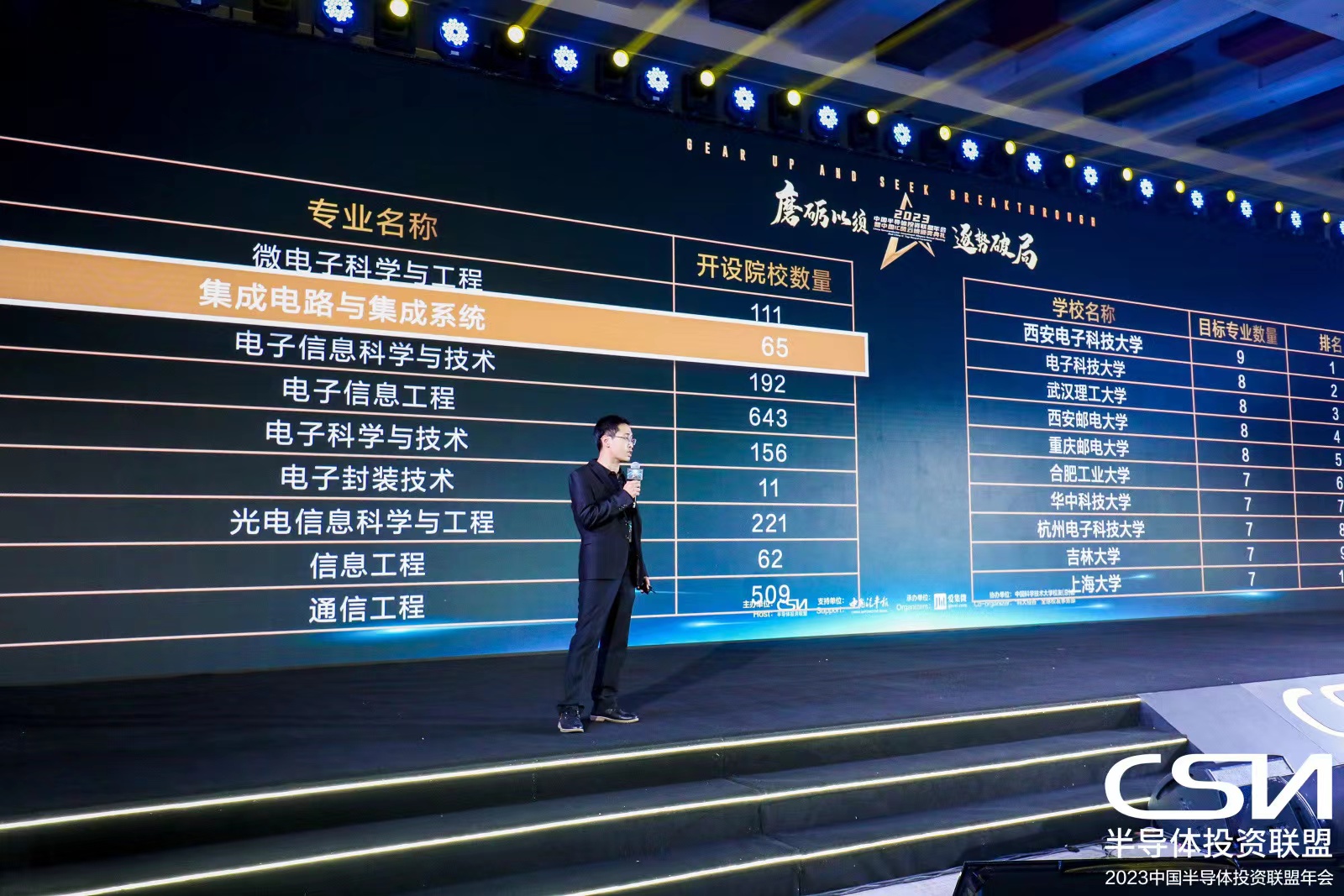
By Kate Yuan
China’s IC industry still has a huge gap in talent demand, and the salary increase has become more stable than the last two years. Han Pengkai, general manager of JW Insights career division, shared related information in “2022 Report on China IC Talents and Salary Trend.”

The report was released at the 2023 China Semiconductor Investment Alliance (CSIA) Annual Meeting & China IC Top Award Ceremony held on December 17 in Hefei, eastern China's Anhui Province.
Among the 1,200 universities covered by the report, 60% set up semiconductor majors. "Double First-Class” Universities accounted for 75% of the total amount, reaching 110.
In terms of regional distribution, 232 out of 339 universities established semiconductor related majors in eastern China, including 19 “Double First-Class” Universities, ranking first in all regions with a 26.36% share.
There are nine IC-related majors, including Microelectronics Science and Engineering, Integrated Circuit and Integrated System, Electronic Information Science and Technology, and Electronic and Information Engineering. Han said that some colleges and universities set up all the above majors such as Xidian University, while others only have some of them, like University of Electronic Science and Technology of China, and Wuhan University of Technology.
Eastern China is home to the largest number of colleges and universities with Microelectronics Science and Engineering, taking up 36.04%. This shows that semiconductor development in the Yangtze River Delta area is closely related to talent gathering.

There are 65 universities offering Integrated Circuit and Integrated System major, which is still relatively small proportion compared to other majors, accounting for only 7.91% of universities with IC-related majors.
Xidian University in western China’s Xi’an and University of Electronic Science and Technology of China in Chengdu ranked top two in the number of students majoring in electronics in the 28 “nationally demonstrative” Schools of Microelectronics, with over 4,000 students. Such students at Northwestern Polytechnical University in Xi’an, University of Science and Technology of China in Hefei, and Zhejiang University are also increasing.
“About 39,000 semiconductor talents came from the 28 universities, but it still can not fill the huge gap,” Han pointed out.
The salary of graduates in the IC industry showed a downward trend in 2022, and the salary raise has stabilized gradually because of the excessive increase in the previous two years.
Moreover, there are significant differences in the average salary of talents with different educational backgrounds. The average annual salary of “Project 985” university graduates was RMB364,200 ($52,189), that of “Project 211” graduate students was RMB252,900 ($36,240), while graduates of general universities earned RMB187,500 ($26,868) a year on average.
Shanghai, Beijing, and Shenzhen ranked top three in the Salary Ranking of Top 30 Cities in China's IC Industry. Hangzhou, Nanjing, Xi'an, and Chengdu are also ramping up efforts with salaries of certain positions higher even than the first-tier cities, which is also a major trend.
“JW Insights has cooperated with more than 30 industry associations, 200 electronic colleges and universities, 600 university employment office faculties, 1,000 student communities and 1,500 companies, and can provide an accurate match between graduates and enterprises,” said Han.
JW Insights held large-scale job fairs in Xi'an, Shanghai, Nanjing, and Chengdu in September-November this year, with its platforms for enterprises to find needed talents, according to Han.








